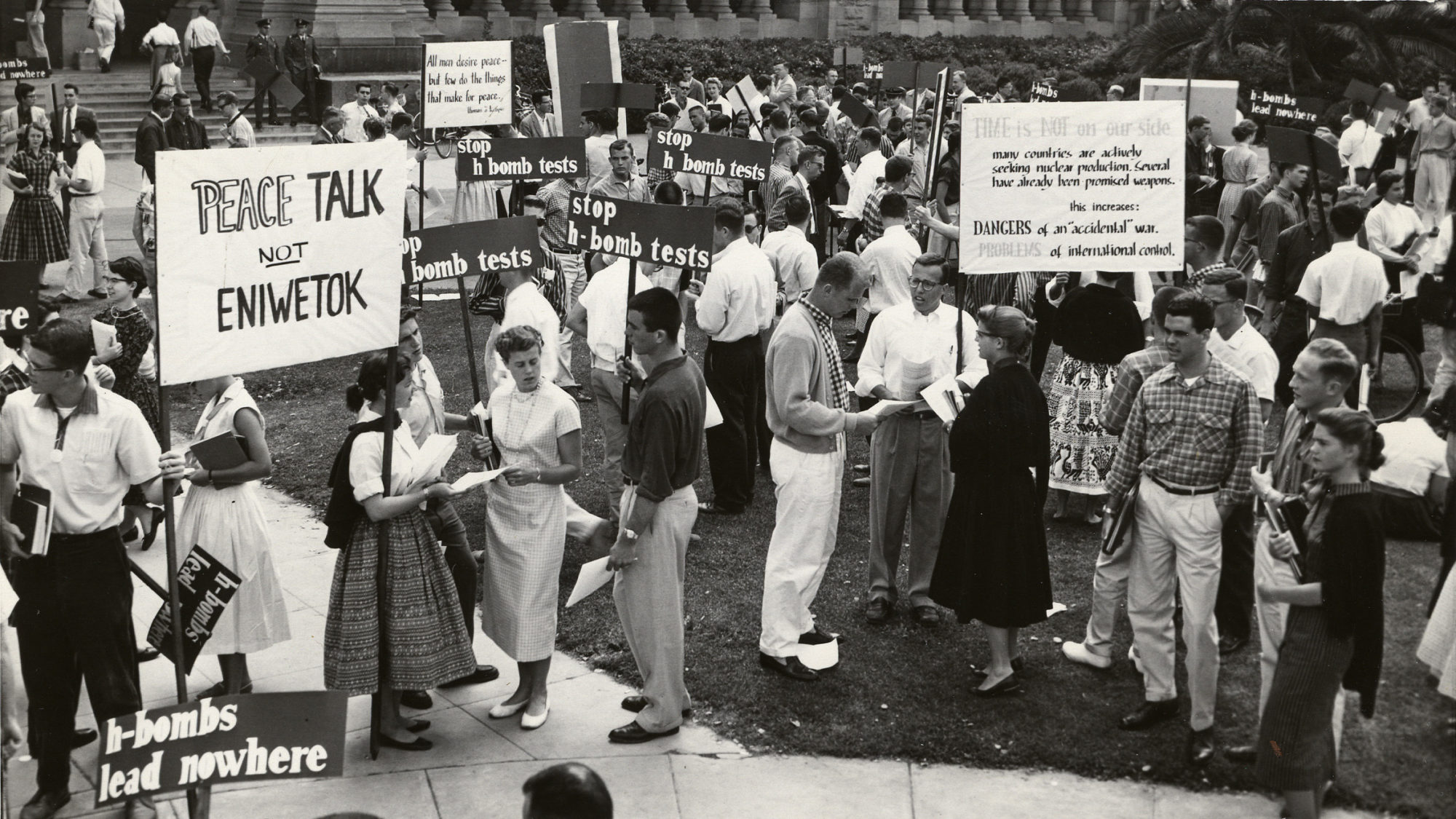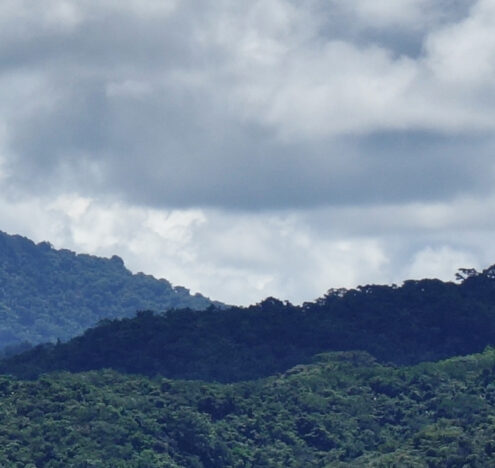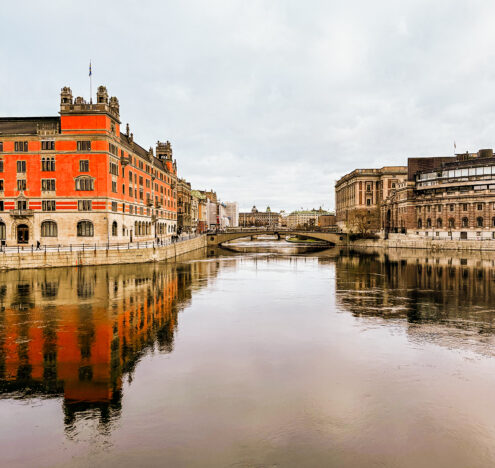By the time the Golden Rule, a 30-foot-long wooden gaff-rigged ketch, had sailed from California to Hawaii in the spring of 1958, the United States had carried out 34 nuclear weapons tests at Bikini and Enewetak atolls in the northern Marshall Islands. That it was preparing to detonate 33 more atomic bombs over the next four months, on multiple occasions conducting two tests in a single day or back to back on consecutive days, was beyond anyone’s worst nightmares.
Entire Marshallese communities were forced to relocate to accommodate the tests, most of them never to return, leaving behind ancestral homelands distorted by atomic blast craters and radioactive lagoons. The tests left a legacy of disease and displacement among a people who were told their sacrifice was “for the good of mankind.”
It was this injustice that inspired four Quaker peace activists to launch a protest with a plan to sail the Golden Rule “into the bomb-test area and remain there, come what may, as a direct confrontation and challenge to the conscience of the American people” (as described in a 1958 article in the Quaker magazine Friends Journal).
In that final year of US nuclear testing in the Marshall Islands, the Golden Rule twice attempted to sail from Honolulu to the test site. However, while still in Hawaiian waters, the crew was intercepted, arrested, and imprisoned for violating a federal injunction prohibiting nuclear protests.
While serving a 60-day sentence in the Honolulu City Jail, the crew wrote to President Dwight Eisenhower, imploring him to halt the nuclear tests and “start turning the course of history away from nuclear warfare.”
Ultimately, the Golden Rule never made it to the Marshall Islands and eventually the boat, having returned to the West Coast, ended up abandoned on the bottom of Humboldt Bay. After the wreck was rediscovered and hauled ashore in 2010, the group Veterans For Peace began an effort to refurbish the boat with the hopes that the storied vessel could one day complete its mission.
OLDER, SLOWER, BUT STEADY
Today, at sixty-one years old, the rebuilt wooden ketch, a bit creaky and with all new parts, took its own sweet time crossing the 2,200 nautical miles of rolling blue ocean. First mate, Tom Rogers, likened sailing at 6 knots to “walking across the Pacific.”
This summer, after several unsuccessful launch attempts, on July 11 in San Diego, the Golden Rule, at long last, embarked on its journey to Hawaii, docking in Hilo Bay on July 31.
The rebuilt wooden ketch, a bit creaky and with all new parts, took its own sweet time crossing the 2,200 nautical miles of rolling blue ocean. First mate, Tom Rogers, likened sailing at 6 knots to “walking across the Pacific.”
As she sailed toward Hawaii, newer, faster boats glided past the Golden Rule, but the scrappy little ketch stayed on course, guided by a crew determined to fulfill a mission dating back to a time when the US dropped the equivalent of 1.6 Hiroshima-sized bombs on Bikini and Enewetak every day for twelve years.
THE CREW
In the years following its restoration, the Golden Rule has been navigated by dozens of rotating crews traveling up and down the West Coast, spreading a message of peace. It was the four-man crew assembled in San Diego this summer that finally made the crossing to Hawaii.
That crew was led by Milosz Kaczorowski, a 30-year-old Polish sailor who heard about the Golden Rule through a crewing portal at his home in Warsaw. Captain Milosz has extensive experience in the Baltic and North Seas, less so in the Pacific, but he likes the fact that this historic boat has become a vehicle for protesting nuclear weapons and militarism.
Capt. Milosz credits Veterans for Peace and the project managers who have led restoration funding efforts, recruited volunteers, and supported the mission over the years, even when the chance of success appeared dim at best. “I was there only to secure the last two steps,” Capt. Milosz said.
Knowing the boat had previously failed to achieve its stated mission on several occasions, Capt. Milosz conceded, “Some people were starting to be skeptical if this boat was even able to go and I was definitely one of them when I came.” But after three weeks of preparing with crew members Chris Mayer (a 58-year-old retired computer programmer), 19-year-old Tate Furr, and first mate Tom Rogers (72), the Golden Rule made the 20-day crossing without incident.
Shortly after reaching Hawaii, Capt. Milosz flew back to Poland but will return to Hawaii in December to continue to serve as captain for the remainder of the voyage, crossing to the Marshall Islands in January, then on to Guam, Okinawa, South Korea, and ultimately mainland Japan in time for the 75th anniversary of the atomic bombings of Hiroshima and Nagasaki next August.
NO MORE NUKES, MATE
Sailing with Capt. Milosz was first mate Tom Rogers, a retired Navy officer and former nuclear submarine commander. After retiring from the Navy in 1998, Rogers’ own disillusion with the US failure to denuclearize after the end of the Cold War inspired him to become a full-time nuclear weapons abolitionist and activist with Ground Zero Center for Nonviolent Action with whom he regularly protests outside of the Trident Submarine Base in Bangor, Washington. When Rogers encountered the Golden Rule in 2016, he first served on one of its many rotating crews for short, West Coast stints, returning for this summer’s voyage to Hawaii.
ALL TOGETHER NOW
When the Golden Rule landed in Hilo, one of the first people to welcome it was longtime peace activist Jim Albertini who said, “I feel a real solidarity with the original mission… for a nuclear-free world.” In 1984 Albertini was one of three protesters who swam into Hilo Bay to block the arrival of a nuclear armed warship to the island. Like the Golden Rule, they were physically outmatched but chose to defy a nuclear power in the most direct way possible because, Albertini explained, the ship’s arrival violated Hawaii County’s nuclear-free ordinance, the first such measure taken in the United States.
CALLING FOR PEACE IN THE PACIFIC
Today, Veterans for Peace sees plenty to protest in the Pacific: a sprawling network of domestic and overseas US military bases, year-round war games, new weapons systems that provoke and pollute, alliances forged through coercion, and a history of war from Inchon to Kwajalein, Guadalcanal to Tinian, the Philippines, Indochina, and Okinawa to the firebombing of Tokyo and the atomic bombings of Hiroshima and Nagasaki.
Now, just weeks from the beginning of the fiscal 2020s, the Trump administration’s Nuclear Posture Review is calling for low-yield, “more useable” nuclear weapons and Secretary of Defense Mark Esper says, “our premier theater” (i.e. the Pacific region) requires the construction of more new US military bases.
As the journey of the Golden Rule continues into 2020, project manager Helen Jaccard is leading community outreach efforts, coordinating presentations, discussions, and events where nuclear weapons and militarism are discussed. Jaccard says the people of Hawaii have been very welcoming and receptive to the Golden Rule’s call for peace in the Pacific.
Jaccard explained that through Veterans for Peace, the Golden Rule is aligned with the International Campaign to Abolish Nuclear Weapons (ICAN) and its drive to expand support for the UN Treaty on the Prohibition of Nuclear Weapons. The Golden Rule is also advocating on behalf of a “no first use” policy, divesting from companies that fund nuclear weapons, and other principles that form a “back from the brink” framework supported by ICAN. Jaccard hopes the Golden Rule will educate and inspire people across the Pacific to take action.
BEYOND HAWAII
The Golden Rule is scheduled to remain in the Hawaiian Islands through mid-December, moving from Hawaii Island to Maui, Lanai, then Oahu, and Kauai before it makes the three-week crossing over 2,200 miles of open ocean to reach the Marshall Islands early in 2020.
From the Marshall Islands, the Golden Rule will sail further west to Guam, Commonwealth of the Northern Mariana Islands (Saipan, Tinian, Pagan) Okinawa, South Korea’s Jeju Island, and finally Japan in time for the 75th anniversary of the atomic bombings of Hiroshima and Nagasaki.
Speaking to the significance of the Golden Rule’s journey, former Bikini Atoll Mayor Alson Kelen said, “Bikini Atoll is where the Marshallese canoe was born.” Kelen today runs a traditional canoe program and serves as a commissioner on the National Nuclear Commission seeking justice for the nuclear tests. He explained that the first Marshallese canoe builders, Lewa and Lõmtal, built the first wa (canoe) in the northern Marshall Islands.
“Unfortunately, it’s the same group of islands that the US tested their atomic bombs,” Kelen said. “It’s most appropriate for a sailing vessel to sail our ocean and share our story.”
Jon Letman is a Hawaii-based independent journalist covering people, politics, and the environment in the Asia-Pacific region.





















